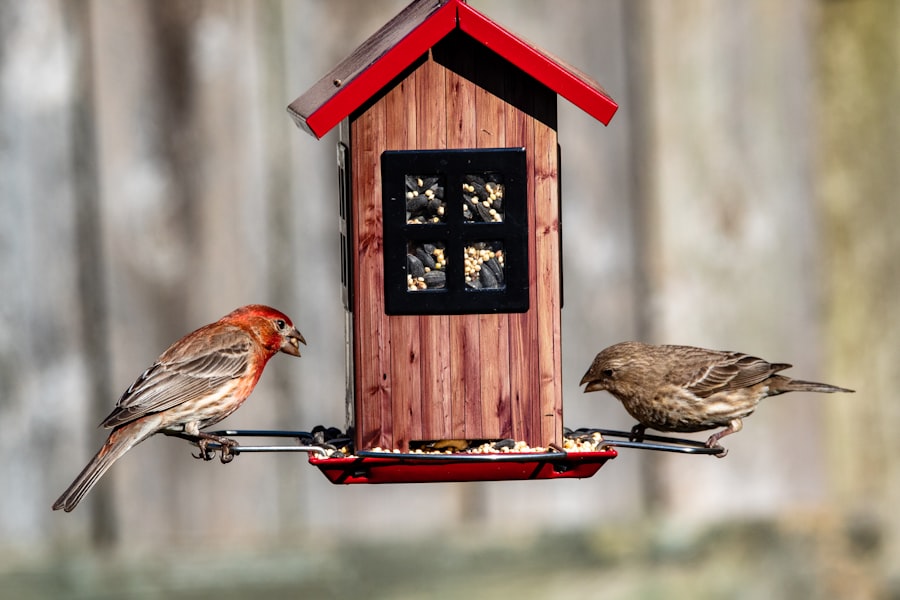Chicken keeping has gained popularity in recent years as individuals strive for greater self-sufficiency and sustainability. This practice can be undertaken in both rural and urban environments, offering a fulfilling experience for poultry enthusiasts. Chickens provide multiple benefits, including a consistent supply of fresh eggs, companionship as pets, and natural pest control in gardens and yards.
However, prospective chicken keepers must familiarize themselves with the essential requirements for housing and maintaining these birds. Key considerations include space allocation, coop design, and proper care techniques. Understanding these fundamental aspects is crucial for successfully integrating chickens into one’s lifestyle and ensuring their health and well-being.
Table of Contents
- 1 Space Requirements for Chickens
- 2 Coop Size and Design
- 3 Outdoor Run Size and Layout
- 4 Considerations for Free-Range Chickens
- 5 Factors to Consider for Urban Chicken Keeping
- 6 Conclusion and Next Steps
- 7 FAQs
- 7.1 What is the minimum space requirement for keeping chickens?
- 7.2 What are the factors to consider when determining the space needed for chickens?
- 7.3 Can chickens be kept in a small backyard or urban setting?
- 7.4 What are the consequences of overcrowding chickens?
- 7.5 Are there any regulations or ordinances regarding the space requirements for keeping chickens?
Key Takeaways
- Keeping chickens can be a rewarding and sustainable hobby, providing fresh eggs and natural pest control.
- Chickens require adequate space for their well-being, including a coop and outdoor run.
- The coop should provide at least 2-3 square feet of space per chicken, with proper ventilation and nesting boxes.
- The outdoor run should allow for at least 8-10 square feet per chicken, with secure fencing and protection from predators.
- Urban chicken keeping requires consideration of local regulations, noise, and space limitations, but can still be feasible with proper planning.
Space Requirements for Chickens
Minimum Space Requirements
As a general rule of thumb, you should allow for at least 2-3 square feet of indoor space per chicken in the coop, and 8-10 square feet of outdoor space in the run.
The Benefits of Ample Space
However, more space is always better if you have the room to spare. Providing ample space for your chickens not only ensures their physical well-being but also helps prevent behavioral issues that can arise from overcrowding, such as aggression and feather picking. Additionally, having enough space can help reduce the risk of disease transmission and keep the coop and run cleaner and more manageable.
Considering Breed-Specific Needs
On the other hand, it’s important to consider the specific needs of different chicken breeds when determining space requirements. For example, larger breeds like Orpingtons or Brahmas may need more space than smaller bantam breeds. Similarly, if you plan to keep roosters with your hens, you’ll need to account for their territorial nature and provide extra space to prevent conflicts.
Conclusion
Ultimately, providing adequate space for your chickens is essential for their overall health and well-being, so it’s important to carefully consider your available space and the number and types of chickens you plan to keep before building or purchasing a coop and run.
Coop Size and Design

The coop is the primary housing structure for your chickens, providing shelter, roosting space, and nesting boxes for egg-laying. When designing or choosing a coop, it’s important to consider the size and layout to ensure that it meets the needs of your flock. As mentioned earlier, allowing 2-3 square feet of indoor space per chicken is a good starting point for determining the size of the coop.
However, it’s also important to consider additional factors such as ventilation, natural light, and predator protection. A well-designed coop should have adequate ventilation to prevent moisture buildup and ensure good air quality for your chickens. This can be achieved through windows, vents, or adjustable openings that allow for airflow while protecting against drafts.
Natural light is also important for chickens’ health and egg production, so incorporating windows or translucent roofing panels can help provide ample daylight inside the coop. Finally, predator protection is essential to keep your chickens safe from potential threats like raccoons, foxes, or birds of prey. This may involve using sturdy hardware cloth or wire mesh to secure openings and prevent unauthorized entry.
In addition to these basic considerations, coop design can also incorporate features like removable roosts for easy cleaning, sliding or hinged doors for access, and easy-to-clean flooring materials such as linoleum or removable trays. Nesting boxes should be provided at a ratio of one box for every 3-4 hens, and they should be located in a quiet, darkened area of the coop to encourage egg-laying. By carefully planning the size and design of your coop, you can create a comfortable and functional living space for your feathered friends.
Outdoor Run Size and Layout
In addition to the coop, chickens also need access to an outdoor run where they can forage, exercise, and soak up some sunshine. The size and layout of the outdoor run are just as important as the coop itself when it comes to providing a healthy and enriching environment for your flock. As mentioned earlier, allowing 8-10 square feet of outdoor space per chicken is a good starting point for determining the size of the run.
However, more space is always better if you have the room to spare. When planning the layout of the outdoor run, it’s important to consider factors such as shade, protection from predators, and opportunities for enrichment. Providing shade in the form of trees, shrubs, or a covered area can help keep your chickens comfortable during hot weather.
Additionally, ensuring that the run is fully enclosed with secure fencing or wire mesh can help protect your flock from predators while still allowing them to enjoy the outdoors. Enrichment is also an important consideration when designing the outdoor run. Chickens are natural foragers and enjoy scratching and pecking at the ground in search of insects and plants.
Providing opportunities for natural behaviors like dust bathing and perching can help keep your chickens mentally and physically stimulated. This can be achieved through the addition of dust bathing areas filled with sand or diatomaceous earth, as well as sturdy branches or platforms for perching. Ultimately, creating a well-designed outdoor run that provides ample space, protection from predators, and opportunities for enrichment is essential for ensuring the health and happiness of your flock.
Considerations for Free-Range Chickens
For those with ample space and a suitable environment, free-ranging your chickens can be a great way to provide them with access to natural food sources and plenty of room to roam. Free-ranging allows chickens to exhibit natural behaviors like scratching for insects, dust bathing, and exploring their surroundings. However, there are several important considerations to keep in mind when allowing your chickens to free-range.
First and foremost, it’s important to ensure that your property is safe and secure for free-ranging chickens. This may involve fencing off potential hazards such as roads or bodies of water, as well as securing the perimeter to prevent predators from gaining access. Additionally, providing adequate shelter and roosting areas outdoors can help protect your chickens from the elements and potential threats.
Another consideration for free-ranging chickens is their impact on your garden or landscaping. While chickens can be great at controlling pests like slugs and snails, they may also cause damage to plants and flower beds through scratching and pecking. If you have valuable or delicate landscaping, it’s important to consider ways to protect these areas from your free-ranging flock.
Finally, it’s important to be mindful of local regulations and ordinances regarding free-ranging chickens. Some areas may have restrictions on where chickens are allowed to roam or may require additional permits or fencing requirements for free-ranging poultry. Overall, free-ranging can be a rewarding experience for both chickens and their owners, but it’s important to carefully consider the safety and environmental impact before allowing your flock to roam freely.
Factors to Consider for Urban Chicken Keeping

Understanding Local Regulations
Before starting an urban chicken-keeping venture, it’s crucial to familiarize yourself with local regulations and ordinances regarding poultry keeping. Some areas may have restrictions on the number of chickens allowed, coop placement, or noise levels that must be adhered to.
Overcoming Space Limitations
Space limitations are another important factor to consider when keeping chickens in an urban environment. Coops and runs may need to be smaller than those in rural settings, so maximizing vertical space and utilizing compact designs can help make the most of limited space. Additionally, noise levels should be taken into account when choosing chicken breeds, as some breeds are quieter than others.
Effective Waste Management
Properly managing chicken waste is essential for maintaining a clean and odor-free environment in close quarters. This may involve regular cleaning of the coop and run, as well as composting or disposing of waste in accordance with local regulations.
Building Positive Community Relationships
Finally, it’s important to consider the potential impact of chicken keeping on neighbors and the surrounding community. Communicating with neighbors about your plans to keep chickens can help address any concerns they may have and foster positive relationships within the community. In conclusion, while urban chicken keeping comes with its own set of challenges, it can be a rewarding and sustainable practice with careful planning and consideration of local regulations and community dynamics.
Conclusion and Next Steps
In conclusion, keeping chickens can be a rewarding and enjoyable experience for both rural and urban dwellers alike. By carefully considering factors such as space requirements, coop design, outdoor run layout, free-ranging considerations, and urban challenges, you can create a healthy and enriching environment for your feathered friends. If you’re considering embarking on your own chicken-keeping journey, the next steps involve researching local regulations and ordinances regarding poultry keeping, familiarizing yourself with different chicken breeds and their specific needs, and carefully planning the design and layout of your coop and outdoor run.
Whether you’re looking to raise chickens for fresh eggs, pest control, or simply as pets, taking the time to create a comfortable and functional living space for your flock will ultimately lead to a more enjoyable experience for both you and your feathered friends. With careful planning and consideration of the factors outlined in this article, you can embark on a successful chicken-keeping journey that brings joy and sustainability to your life.
If you’re considering keeping chickens, you may be wondering how much room you need to provide for them. According to a helpful article on Poultry Wizard, an A-frame chicken coop can be a great option for providing enough space for your feathered friends. The article discusses the benefits of this type of coop and offers valuable tips for keeping chickens happy and healthy. Check it out here for more information on creating the perfect living space for your chickens.
FAQs
What is the minimum space requirement for keeping chickens?
The minimum space requirement for keeping chickens is 2-3 square feet per bird inside the coop, and 8-10 square feet per bird in an outdoor run.
What are the factors to consider when determining the space needed for chickens?
Factors to consider when determining the space needed for chickens include the breed of chickens, the size of the coop and outdoor run, and the amount of time the chickens will spend outside.
Can chickens be kept in a small backyard or urban setting?
Yes, chickens can be kept in a small backyard or urban setting as long as there is enough space for them to move around comfortably and access to fresh air and sunlight.
What are the consequences of overcrowding chickens?
Overcrowding chickens can lead to stress, aggression, and the spread of diseases. It can also result in a decrease in egg production and overall health of the chickens.
Are there any regulations or ordinances regarding the space requirements for keeping chickens?
Yes, many localities have regulations or ordinances regarding the space requirements for keeping chickens. It is important to check with local authorities before keeping chickens to ensure compliance with any applicable laws or regulations.
Meet Walter, the feathered-friend fanatic of Florida! Nestled in the sunshine state, Walter struts through life with his feathered companions, clucking his way to happiness. With a coop that’s fancier than a five-star hotel, he’s the Don Juan of the chicken world. When he’s not teaching his hens to do the cha-cha, you’ll find him in a heated debate with his prized rooster, Sir Clucks-a-Lot. Walter’s poultry passion is no yolk; he’s the sunny-side-up guy you never knew you needed in your flock of friends!







